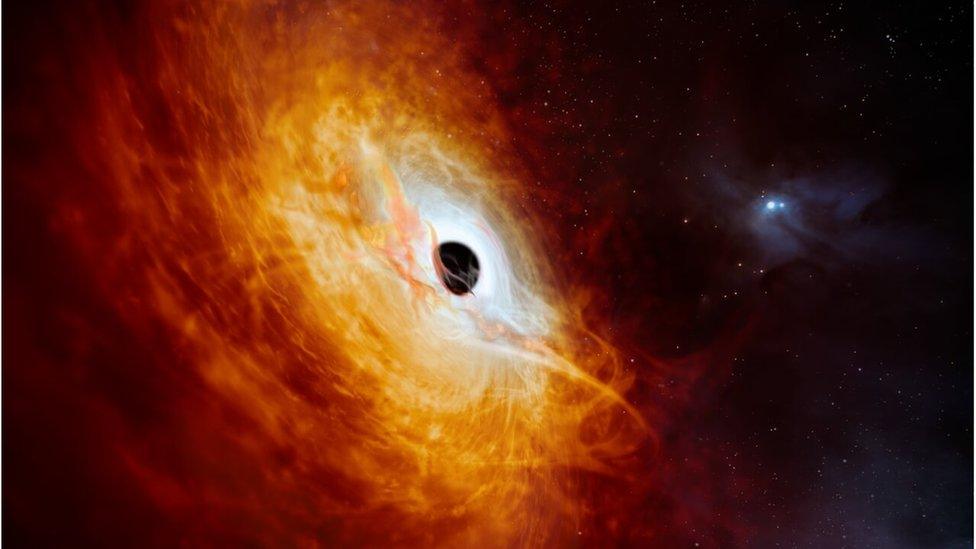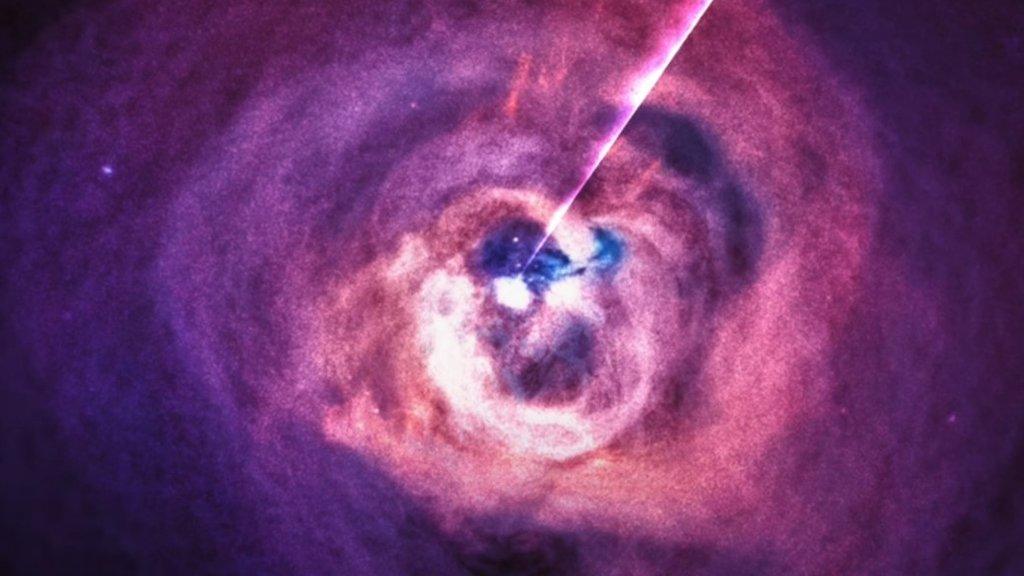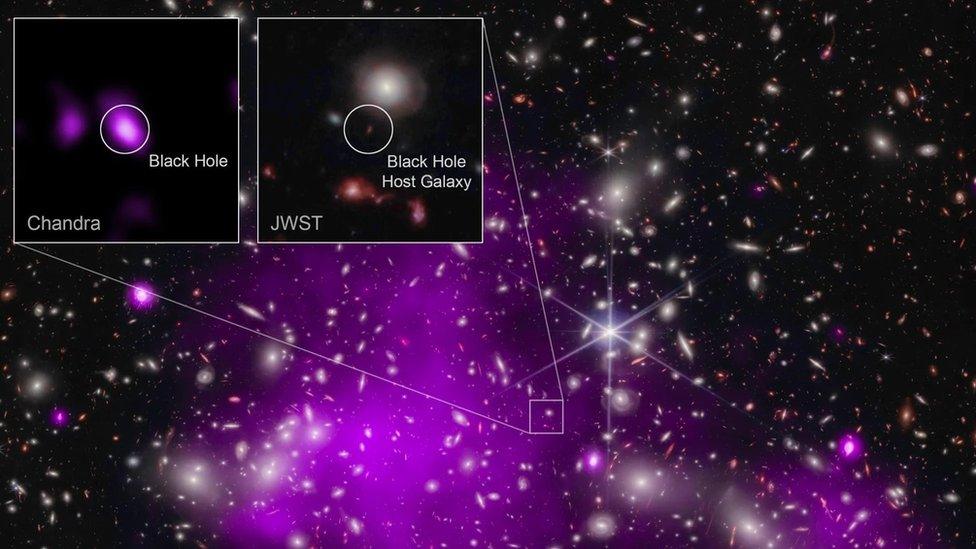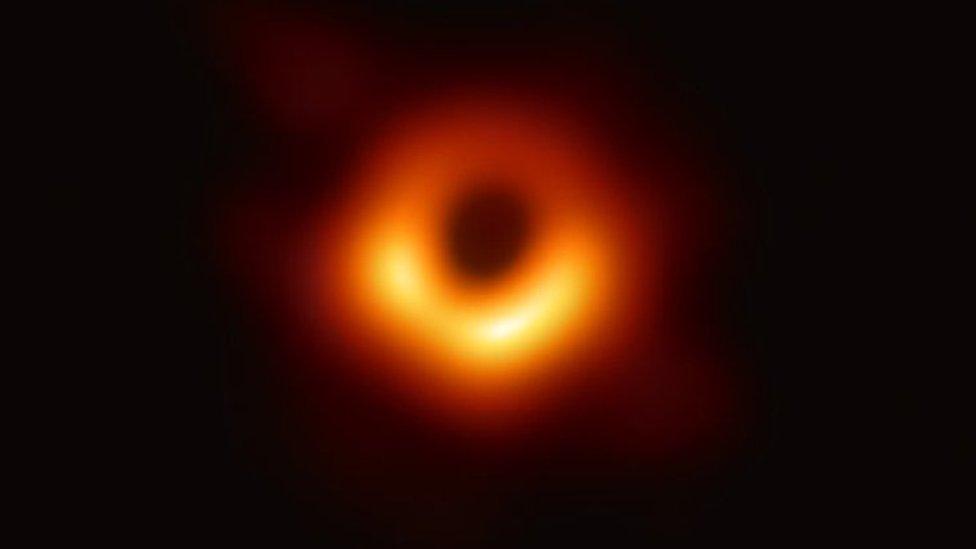Fastest-growing black hole discovered by scientists
- Published
- comments

The bright core of J0529-4351 is powered by a supermassive black hole, as shown by this artist's impression
Some pretty big space news has come out of Australia and it's only getting bigger.
A team has discovered the fastest-growing black hole ever recorded.
Black holes are places in space where the pull of gravity is so strong that not even light can escape from it.
This one is taking in a sun-sized amount of matter every day.
The black hole exists within a special quasar, which is a galaxy with a very active and energetic core.
The black hole at the centre of this galaxy is pulling matter towards itself at a phenomenal rate.
As the matter approaches the core of the black hole it is torn apart, releasing a huge amount of light, creating what scientists believe could be the brightest thing in the universe.

An artist has created what the black hole might look like
The Australian-led team worked on observations of the quasar, known as J0529-4351, captured by the Very Large Telescope in Chile.
Though hard to imagine, the team says the quasar shines around five hundred trillion times brighter than our sun.
Christopher Onken, who is an astronomer from the Australian National University, says it is surprising that it has remained unknown until today.
He said: "We already know about a million less impressive quasars. It has literally been staring us in the face until now."
How does a black hole 'burp'?
The quasar was first spotted in 1980, back then it looked like just a dot and scientists assumed it was a star that was relatively close to Earth.
Observations have since confirmed those assumptions were way off the mark.
It turns out it is so far away, it has taken more than 12 billion years for its light to reach us.
Black holes are formed when a dying star collapses inward under the pressure of its own weight. This leads to something called a supernova, a star's extremely powerful explosion.
Black holes are places in space where the pull of gravity is so strong that even light can't escape from it. This is what makes them invisible.
- Published26 August 2022

- Published10 November 2023

- Published11 April 2019

